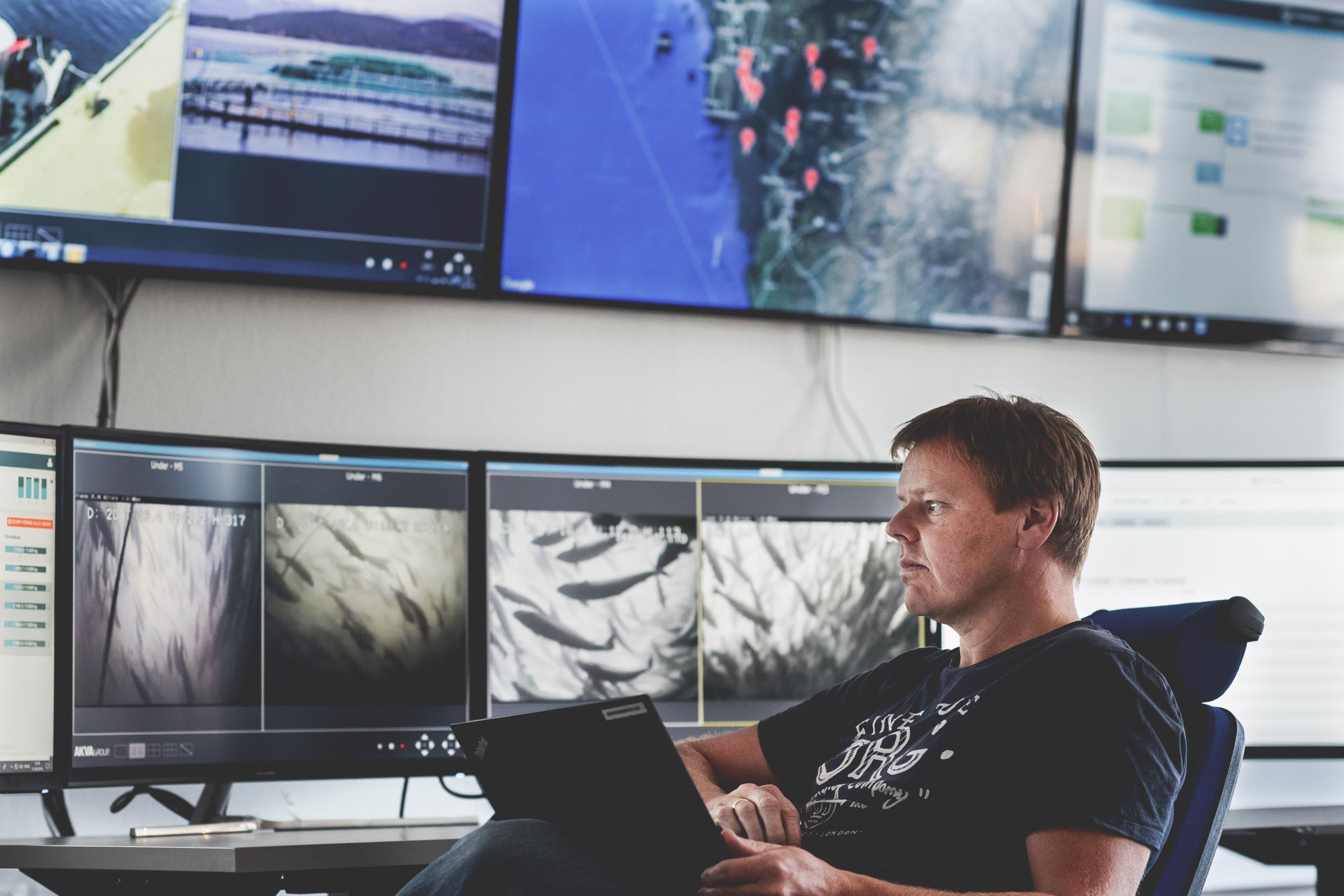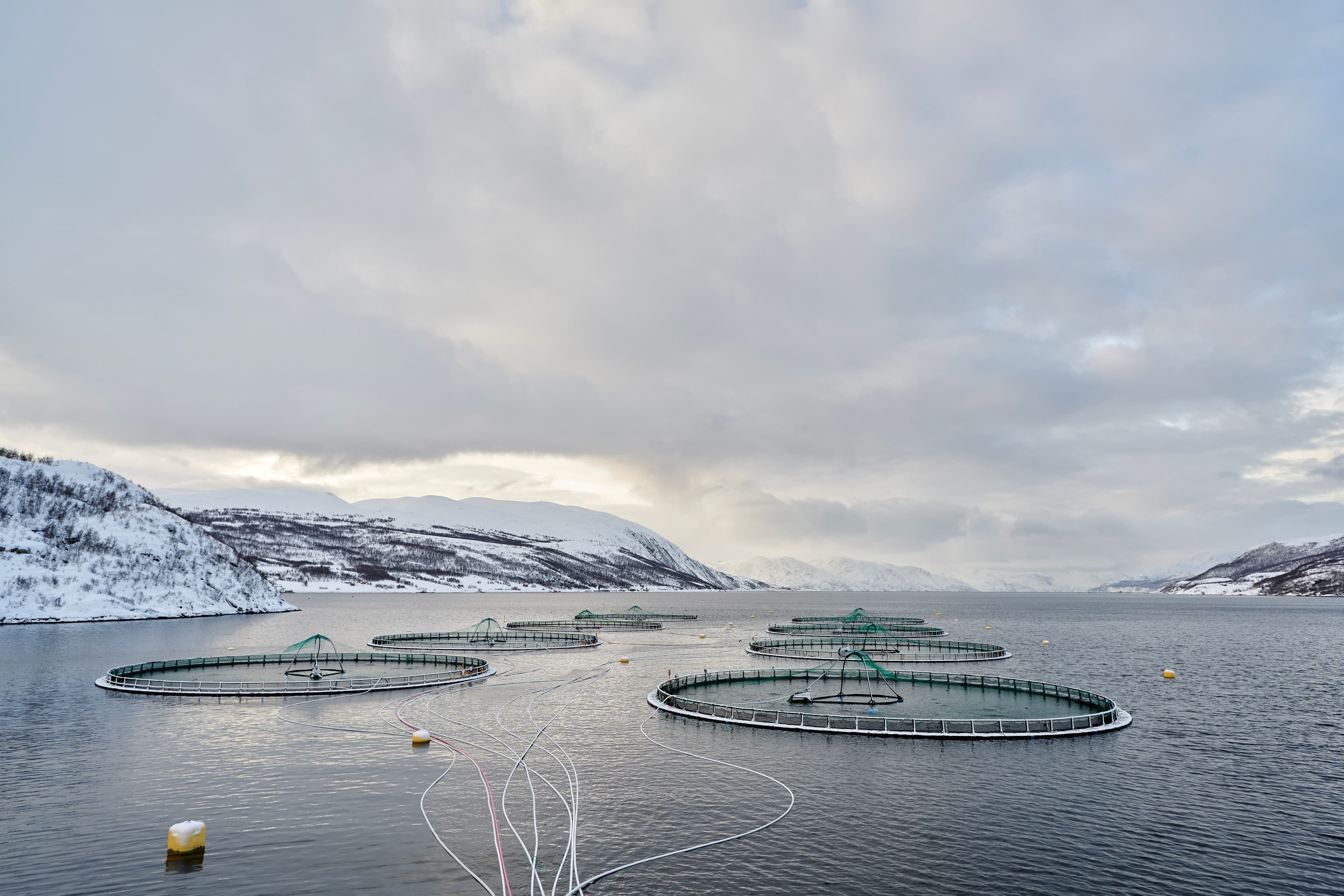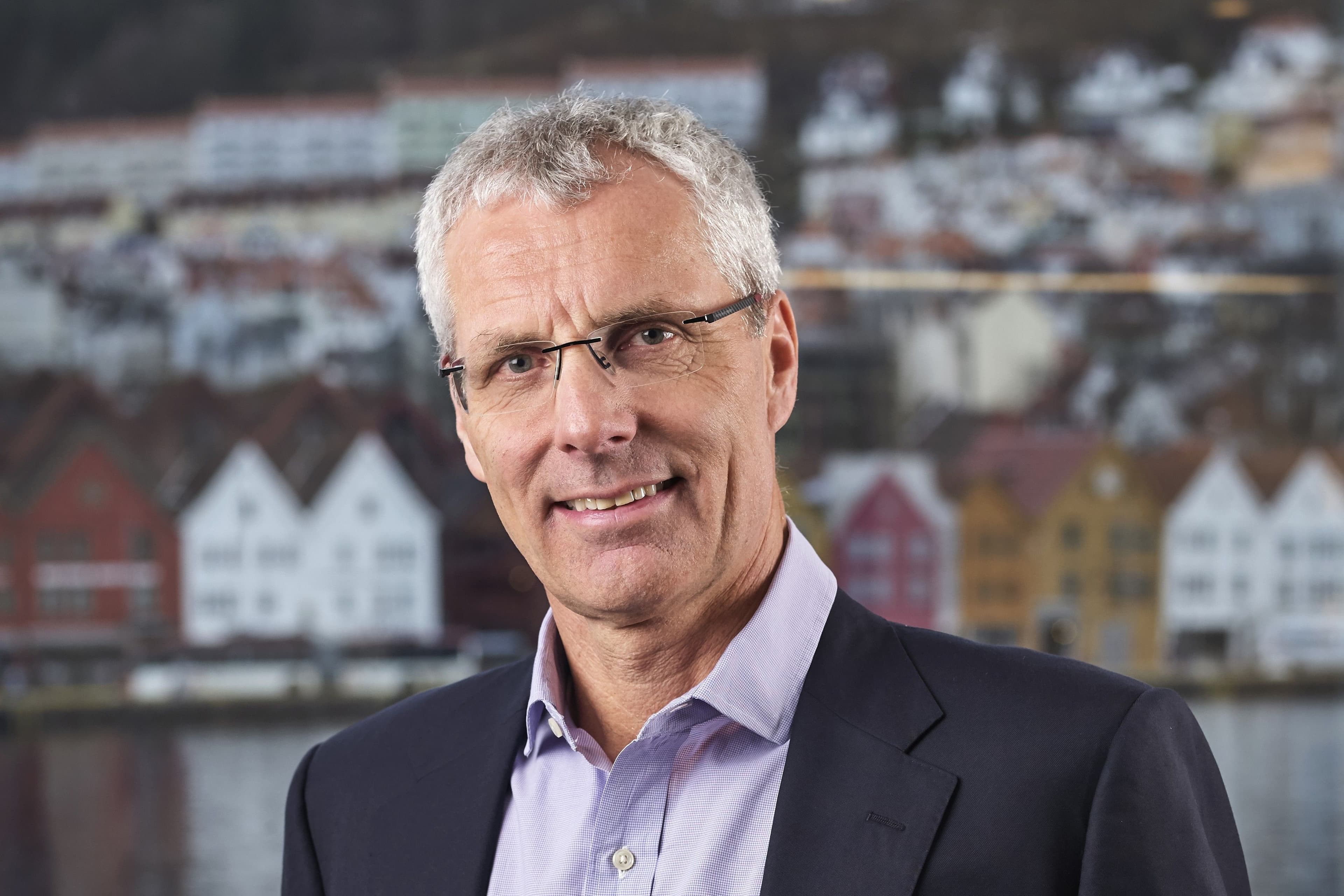
Less time at sea (post-smolt)
During the first stages of their life, salmon are raised in onshore freshwater hatcheries. In traditional salmon farming, fish are transferred to the sea when they have undergone the smoltification process, making them physiologically ready for life in saltwater. With our post-smolt strategy, we keep the fish longer on land or in closed facilities in the sea, shortening the time that they spend growing in open sea-pens by several months. Less time at sea will improve biological control, fish welfare, survival and quality because each salmon is less exposed to biological risks like sea lice, seaborne diseases or other unfavorable ocean conditions such as harmful algae or sub-optimal oxygen levels. Less exposure to these risks will also allow us to improve sea lice control better utilize preventative methods and avoid expensive treatments. This will reduce our environmental impact as well as our production cost. Post-smolt also increases flexibility with regard to the transfer of smolt, allowing us to fallow sites for longer periods if necessary. The fish will be larger and more robust when entering the sea-growing phase, which we believe will increase health and welfare in and of itself.
Post-smolt transfer also allows for a more efficient production cycle. It takes less time to reach harvestable size in the sea, which frees up capacity at farms to grow more salmon within existing licenses. The result is a lower environmental footprint per fish, better fish health and welfare, lower costs, and increased annual harvests. Altogether, we expect post-smolt transfer to reduce operational expenditure in the sea-growing phase, improve profitability and competitiveness, and provide opportunities for sustainable production growth.
Achievements in 2022
- In Rogaland, where we are pioneering our post-smolt strategy:
- The average smolt transferred to the sea in 2022 weighed 550 grams compared to an average of 120 grams in 2015.
- More than 50% of fish harvested were raised from post-smolt (fish weighing more than 200 grams when transferred to sea).
- Post-smolt in combination with preventive sea lice measures can reduce production time at sea from an average of 18 months to 12 months.
- Our results so far demonstrate stable production of postsmolt up to 1 kg.
- There are strong indications of improved biological control compared to standard smolt weight, with a significant reduction in sea lice treatments. Compared to 2021, we achieved a 44% reduction in biomass receiving sea lice treatments. More than 50% of the pens from which fish were harvested did not receive any sea lice treatment, up from 40% in 2021.
Going forward
- We plan to boost post-smolt capacity in Rogaland by at least 5 250 tonnes. In Finnmark, we target an increase of 3 000 tonnes of post-smolt at our current freshwater facility in Adamselv. Investment decisions have been postponed from 2022 to 2023, and will depend on the final outcome of the resource rent tax proposed by the Norwegian government.
- Grieg Seafood Rogaland aims to increase the average smolt transfer weight to approximately 800 grams in 2025.
- In Newfoundland, we plan to start constructing a module in 2023, with a capacity of 1 400 tonnes post-smolt.
Preventative practices and fish welfare
We pursue a systematic, long-term approach to fish health and welfare. The key is investment in and further development of preventive measures against seaborne hazards, such as sea lice, harmful plankton, jellyfish, low oxygen levels, infectious diseases and low seawater temperatures.
Prevention will reduce handling and stress for the fish. It will also reduce our environmental footprint by, for instance, reducing the number of treatments needed. Moreover, prevention instead of handling reduces production costs. The result is improved welfare, stronger growth, increased survival, high harvesting quality and lower costs.
Achievements in 2022
- In BC, we have installed a combination of aeration/oxygen generation systems and retractable barriers to keep harmful algae outside and push clean and oxygenated water up to the fish during periods of harmful algae blooms or sub-optimal oxygen levels. The effect is increased survival and continued feeding and on-growth during challenging conditions, as well as better sea lice control. Mortality related to harmful algae blooms has been reduced from 3.4% in 2019 to 1.15% in 2022.
- In Rogaland, due to post-smolt and the use of cleaner fish as a preventive method to control sea lice, more than 50% of the pens of fish harvested did not receive any sea lice treatments in 2022.
Going forward
- To mitigate the future impact of the parasite Spironucleus salmonicida (Spiro), which posed a challenge in Finnmark in 2022, we will invest NOK 70 million in UV treatment in 2023, to secure the water intake to our freshwater facility. We have also initiated a project with academia to investigate and learn more about the parasite.
- Some of our numerous ongoing initiatives to improve fish health and welfare throughout the production cycle include the selection of roe with specific qualities related to sea lice and diseases, feed customized for the various stages of the salmon’s life cycle, and vaccinations targeting specific diseases:
- We have enhanced our feed for use during the winter period, utilizing best available science, to strengthen health, welfare, robustness and quality. Examples of changes are increased levels of essential marine fat and a stronger vitamin mix.
- Initiatives to optimize health, welfare and robustness of smolt and post-smolt by conducting data analysis on historical production data to provide decision-making support.
- Efforts to mitigate the negative impact mechanical sea lice treatments may have on fish health and welfare. Mortality caused by such treatments has been reduced, and we are working to reduce it further.
- We have developed our own fish welfare indicators, based on the Fishwell research project, to be able to more systematically assess and improve fish welfare throughout our operations.
"Precision Farming" - data driven decision support
“Grieg Seafood Precision Farming” is our concept for digitalizing farming operations, where we apply advanced sensors, data analytics, artificial intelligence, and automation with the aim of supporting our farmers to take insight-based decisions before eventual negative impact occurs by utilizing prediction models based on data acquisition as early as possible in everyday operations. The aim is to work more preventatively, improve fish welfare, reduce our impact and improve our farming. We are gaining positive results by combining experience-based knowledge and data-based insight in our projects.
Big data analyses on previously unknown connections between the fish and the environment provide insights for strategic decision making. The use of digital tools and dashboards, providing real-time data on various farming parameters to operational centers as well as to farmers, aims to improve tactical and operational decisions. They also allow us to benchmark on new parameters and learn better from best practice. We aim to be able to predict negative events early, enabling us to apply preventative measures and improve management decisions. The result is expected to be increased growth, reduced environmental impact, improved fish welfare, increased productivity and lower costs. Read more about Precision Farming here.Achievements in 2022
- Our internal analysis team has continued with new data analyses to provide strategic and tactical decision-making support, aimed at mitigating biological challenges:
- Analysis on contributing factors to Yellow mouth disease in BC, where we have developed prediction models and dashboard for visualization for potential outbreak of Yellow mouth. The project is a collaboration with the University of Alberta. The findings in the analysis have given input for optimizing the production cycle at exposed sites in BC.
- Analysis of the drivers behind unexpected mortality on specific sites in Rogaland, by tracing the fish all the way back to the genetic providers. The results are to be further investigated.
- Analyzed reasons for harvest deviations in Finnmark and Rogaland, gaining more insight in optimized transfer of fish throughout the production cycle.
- Analysis to find markers in the data for where and why we experienced the outbreak of parasite Spironucleus salmonicida in Finnmark. Findings have initiated investment in risk mitigation initiatives in our freshwater facility.
- We have developed machine learning models that can forecast growth, mortality, and the likelihood of treatments and diseases like PD and ISA occurring in populations at sea, several days in advance.
- We have initiated a pilot project within democratization of data, that will enable production managers and biological planners to perform data analysis and gain databased insights including simple simulation capabilities.
Going forward
- We are setting up a project to identify the eFCR, bFCR and growth rates for different smolt sizes looking at the whole production cycle (freshwater & seawater), including the optimal smolt size given location, time of input and cost.
- Increased focus on automatic and standardized data acquisition in the freshwater facilities will enable us to do performance analyses in our hatcheries as well as build early warning capabilities for potential negative trends on water quality parameters.
- We are setting up integrated operation centers in both Newfoundland and Finnmark as a continuation of our strategy to strengthen our seawater production by enforcing the utilization of digital capabilities in the group. Both centers will be built to the same design and with similar capabilities as we are running in Rogaland.


